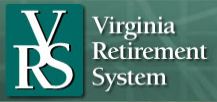Experts: VA retirement system’s six-figure salaries shed light on larger pension woes

VRS: The salaries at the Virginia Retirement System are hardly the only jaw-dropping thing about the pension system, experts say.
By Kathryn Watson | Watchdog.org, Virginia Bureau
ALEXANDRIA, Va. — The officers running Virginia’s underfunded pension system are making more than anyone in the state — and will be getting sweet checks in retirement, too.
The Virginia Retirement System is less than half funded according to some scenarios at a time when the state’s budget picture is grim. That hasn’t kept VRS officials from topping the list of state-paid employees, making up to $787,000 now and topping salaries of pension officers in states with much larger systems than Virginia’s.
VRS’ investment officer Ronald D. Schmitz made more than anyone else on a state salary with a total compensation package of $787,000 last year, followed by former chief investment officer Charles W. Grant with more than $670,000, according to data compiled by the Richmond-Times Dispatch.
Other VRS officials took the seventh, eighth, ninth, 11th, and 18th top-paid spots, with well-heeled university officials filling in the others.
VRS officials argue they must pay top dollar to attract and retain investment officers. VRS, which like so many pension plans lost money when the Great Recession hit, reportedly earned an average 15 percent return on investments in the fiscal year that ended June 30. VRS Director Robert Shultze wasn’t available for comment until next week.
The salaries of some VRS officials merely hint at much larger problems behind them, according to fiscal hawks who study pension issues.
“In an ideal scenario, they would be pretty well compensated because hopefully they’re getting the right returns on investments that’s saving the state money,” said Joe Luppino-Esposito, an editor at the think tank State Budget Solutions.
The problem is the entire retirement system is set up on overly rosy formulas and unrealistic projections, Luppino-Esposito said.
Unfortunately, when VRS officials are “claiming they have a much higher funded ratio than they do, they’re really not doing their jobs,” Luppino-Esposito said. The blame for that spreads beyond VRS to the Legislature.
The VRS is based on an expected 7.5 percent return on investment, dubbed the discount rate. That rate is too high, say some experts.
“That ignores volatility and the fact that no one is going to get that return every year,” said Eileen Norcross, a senior research fellow at George Mason University’s Mercatus Center who focuses on public pensions. “No matter what those investments are made up of, you’re going to get swings of performance over time.”
Even at that rate of 7.5 percent, Virginia’s plan only has two-thirds of the funding it needs to meet the payouts of future retirees. So it’s still, obviously and like virtually every other public pension plan in the country, underfunded.
“When you calculate that the problem is you’re not putting in enough money from the start,” Luppino-Esposito said.
By calculating the state’s liabilities with a more realistic discount rate — like the fair-market valuation that uses 15-year Treasury bonds — VRS’ funded rate plummets to about 41 percent, Luppino-Esposito said.
Even with those grim figures, Virginia is better off than the majority of states, he said.
Just because VRS claimed a 15 percent return on investment doesn’t mean that’s a realistic picture, Norcross said.
“If we had some alternate universe where we’d get 15 percent returns pensions would fund themselves, but that’s not reality,” Norcross said.
The problem with the system is it encourages pension officers to use “riskier” investments,” he said.
But the problem with a defined benefit program like Virginia’s and the vast majority of other states’ is that when investments and funds go south, taxpayers, rather than plan participants, feel the brunt of the blow, Norcross said.
The pension system obligates that money to employees before it can even guarantee the money will be there. Unlike a 401(k) system where a retiree takes whatever the market hands him or her, defined benefit pension systems like Virginia’s promise employees “x” amount per year upon retirement. And somehow, the state — aka taxpayers — has to come up with “x,” no matter what.
“You’re asking the taxpayer to pick up the tab when you don’t get those returns,” Norcross said.
In some states, localities have resorted to closing down fire stations because pensions left them all but penniless.
Of course, VRS — even its investing officers and directors — have no say over whether the state uses a defined benefit or defined contribution plan.
That’s up to state lawmakers.
In 2011, Delegate Chris Jones introduced a bill to transition Virginia to a 401(k)-style program — and quickly abandoned his plan after public employee groups protested.
The high salaries for VRS investment and other officers are just one upshot of Virginia’s status-quo system, Luppino-Esposito said.
If Virginia used more of a 401(k) program, there “definitely wouldn’t be” a need for such well-heeled investment officers, he said. The state would probably just need to pay a few people to advise employees as they selected their own plans.
— Kathryn Watson is an investigative reporter for Watchdog.org’s Virginia Bureau, and can be reached on Twitter @kathrynw5.







